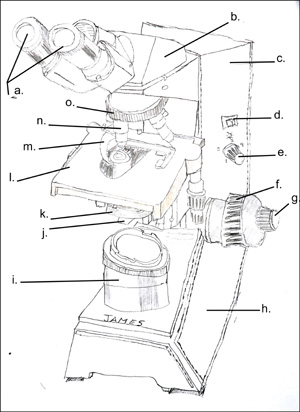The Microscope Basics |
One of the most important instruments used in biology is the microscope. This tool allows us to see that which is imperceptable by the naked eye. History has it, that around 1 AD the Romans undertook the task of investigating the properties of glass and how these properties helped magnify objects when one looked through glass. It took roughly another 12 centuries before the understanding of glass led to the production of the first eye glass. Salvino D'Armate of Italy, would become known as the first person to produce the eye glass, providing the wearer with the power of magnification in one eye. Fast forward nearly 3 centuries and we get the first compound microscope. Around the late 1500's, Zacharias Jansen and his father, Hans used thier knowledge of spectacle making and placed several lenses in a tube, today this tube is known to contain two types of lenses, at the top, the ocular lens or eyepiece (what we look through) and at the bottom, the objective lens, which produces the primary magnified image, which in turn is then amplified by the ocular lens. This two-stage magnification is the principle and basis of the compound microscope.
-O. James
© Orin James 2014 The Compound Microscope
The Compound Microscope
The drawing on the right represents the compound microscope. To view enlarged image in a new window, simply click on image (drawing by Orin James).
-O. James
© Orin James 2014